
The name of this forgotten suburb is preserved in Heaton Public School, which curiously is not located within the area of Heaton private town, but just to the east in Jesmond.
This page is part of the collection of Newcastle’s Obsolete Place Names.


The name of this forgotten suburb is preserved in Heaton Public School, which curiously is not located within the area of Heaton private town, but just to the east in Jesmond.
This page is part of the collection of Newcastle’s Obsolete Place Names.
Some roads in our city snake across the landscape following ridges or valleys, while others cut expansive straight lines across suburbia. In the former category are roads such as Grandview Rd in New Lambton Heights. In the latter category are roads such as Chatham Rd/St in the Hamilton area, and the curious Marshall St which has four disconnected sections running through five different suburbs, from Rankin Park to Garden Suburb.
These long straight roads have more to do with geometry than geography. They originated from the patchwork quilt of rectangular land grants in the mid-19th century, where it was common for roads to be planned along property borders. Such is the case with Marshall St, where an 1884 map shows a three-mile un-named road separating the Scottish Australian Mining Company from Joseph Weller’s 2500 acre land grant.
It remained a road in plan only until the 1920s, when the Scottish Australian Mining Company built the first section as part of “The Lookout Subdivision” in New Lambton Heights. In 1925 it was named “Boundary Rd”, an eminently suitable title as over the years various portions of it divided mining leases, parishes, suburbs, municipalities, and state and federal electorates. In 1933 New Lambton Council changed the name to Marshall St, in recognition of one of the road’s earliest residents, James Gordon Marshall. In 1945 the NSW government unveiled big plans for the road network in Newcastle, including a highway from Rankin Park to Jesmond traversing the bush where the northern section of Marshall St existed only as a line on the map. Plans for this highway then changed many times over many years. In September 2021, Transport for NSW called for tenders for the construction of the $450 million final section of the Newcastle Inner City Bypass, with work to commence in 2022. The expected opening in 2025 will be a final chapter in a 140-year story of a road, from nameless marks on a map to major motorway.
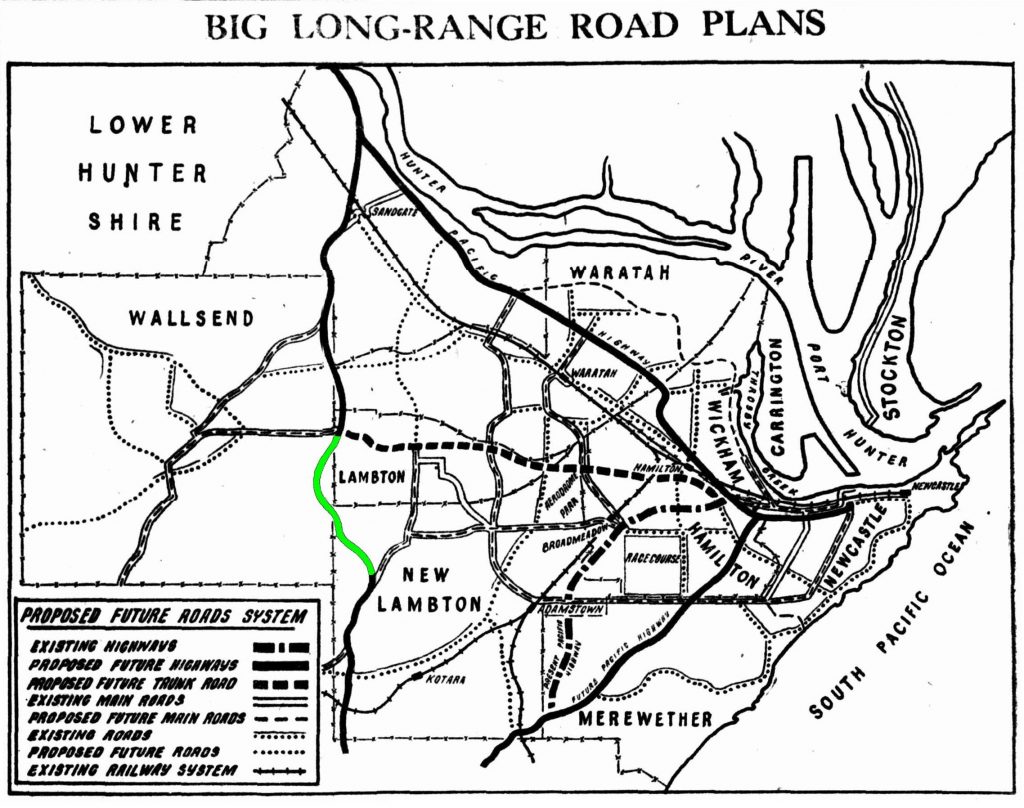

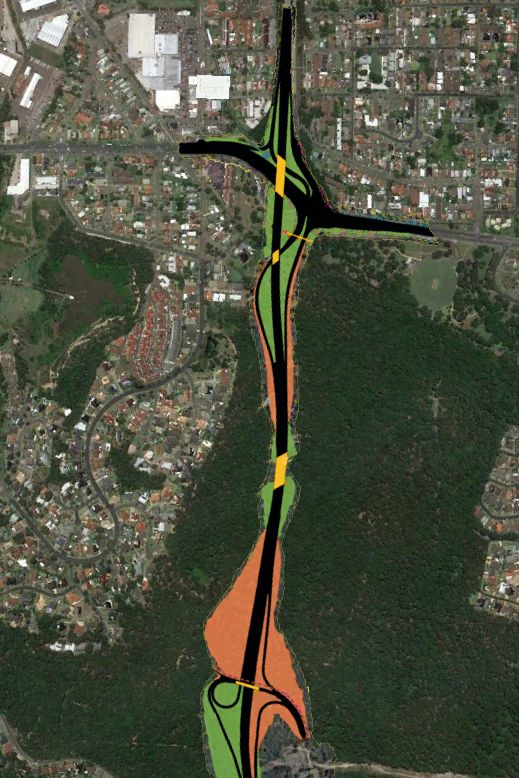
The article above was first published in the December 2021 edition of The Local.
An historical parish map whose origins date back to 1884, shows that the road that was given the name Boundary Road in 1925, was aptly named. It incorporated the following boundaries:
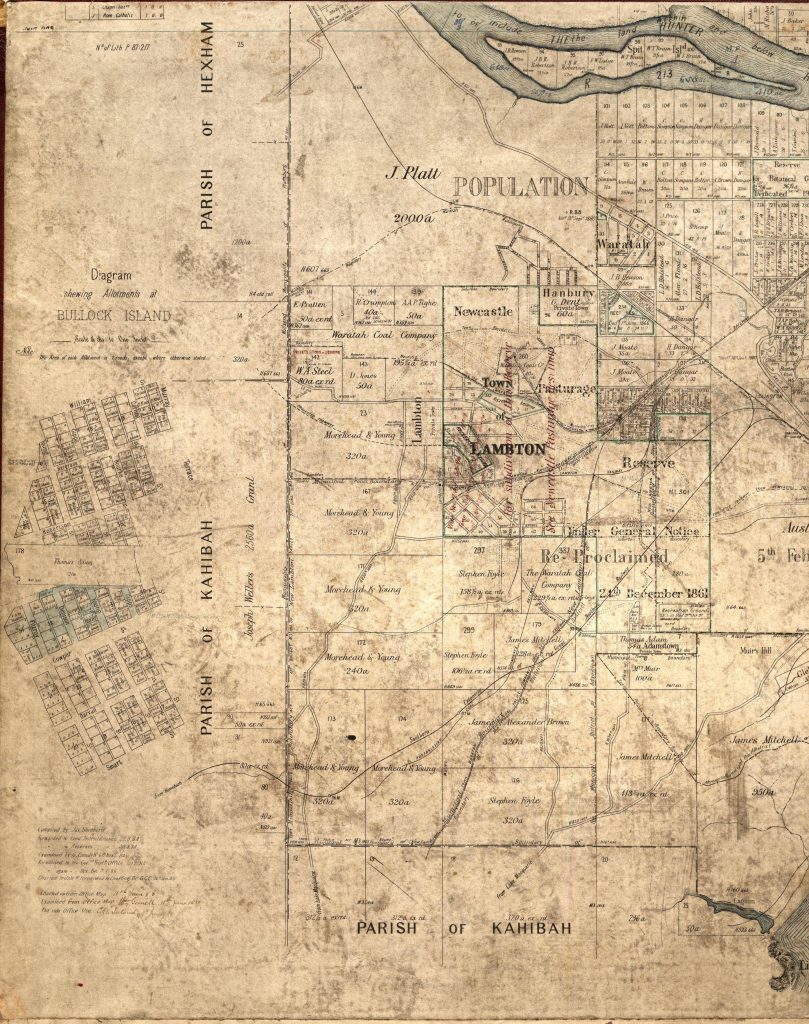
James Gordon Marshall of Cardiff, engine driver, purchased 8 acres of land in November 1918. The land title certificate shows an un-named road on the eastern boundary of his property. This road was the boundary between New Lambton and Lake Macquarie council areas.
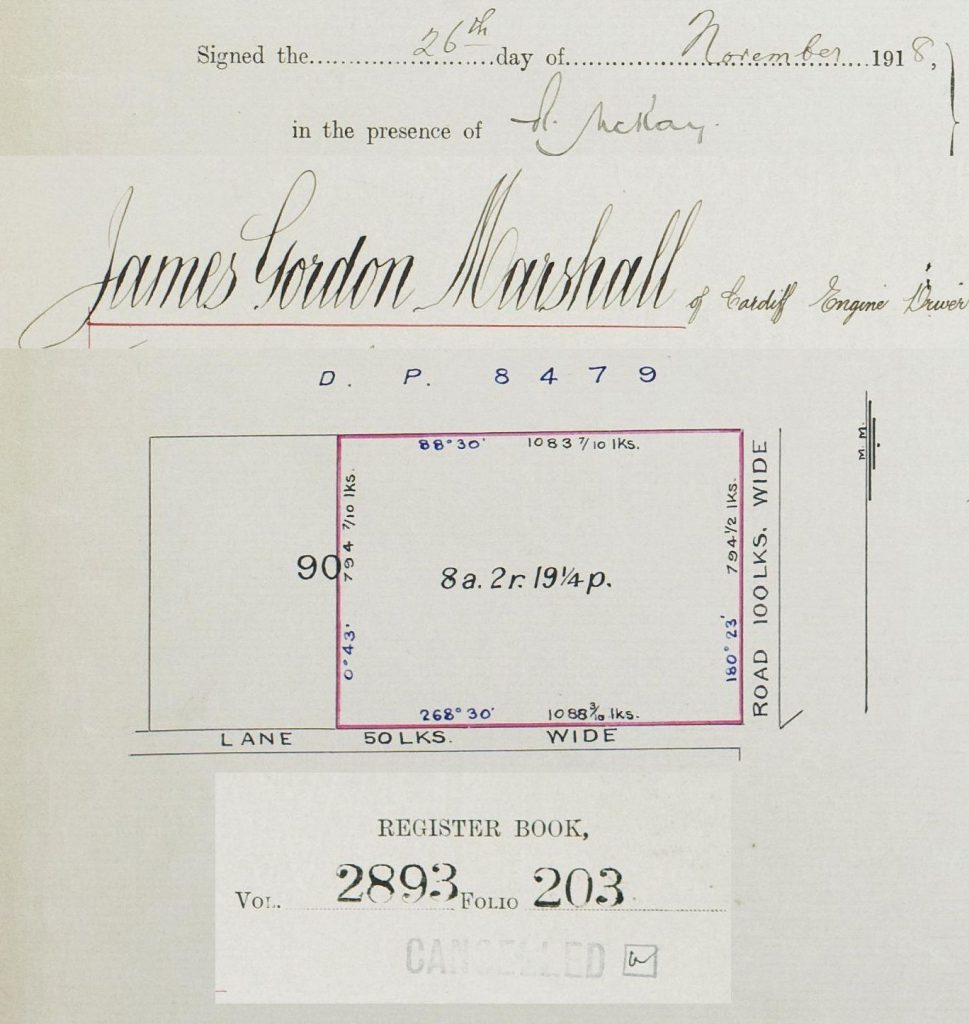
The location of Marshall’s land is shown below.

On the eastern side of the road, opposite Marshall’s property, the Scottish and Australian Mining Company subdivided a portion of their land to sell in October 1920.
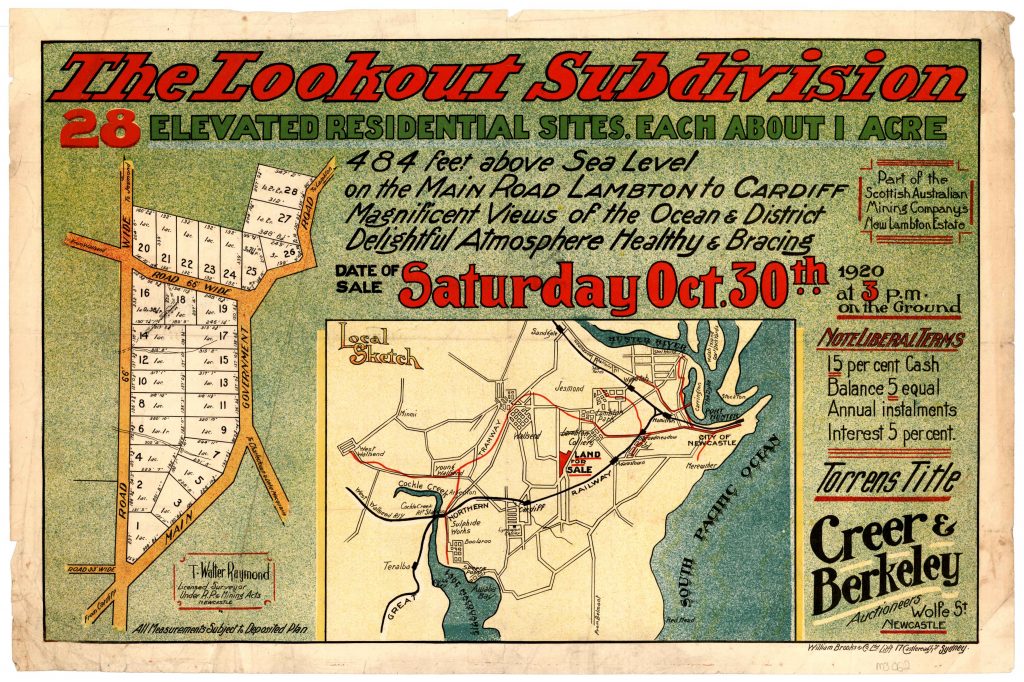
In October 1925 Lake Macquarie Shire Council informed the Cardiff Heights Progress Association (James Marshall presiding) that the road at the east boundary of their council area was to be named Boundary Road.
In January 1927 James Marshall applied to Hunter District Water Board to have water mains extended to his property on Boundary Road.
In October 1933, at the suggestion of Lake Macquarie Shire Council, New Lambton Council agreed that the name of the road should be changed from Boundary Road to Marshall St. Despite the decision being made in 1933, it took another four years before the name change was made official in June 1937.



| Article Date Event Date | Notes |
|---|---|
| 29 Oct 1925 | "At a meeting of the Cardiff Heights Progress Association, Mr. Marshall presiding a letter was received from the shire council stating that the road on the boundary would be called Boundary-road." |
| 17 Jan 1927 | J G Marshall applies to Hunter District Water Board to have water mains extended to his property on Boundary Road. |
| 14 Sep 1933 | "Lake Macquarie Shire Council asked if [New Lambton] Council would bear half of the cost of constructing a boundary road between main road number 223 and Mr. Marshall's premises, Cardiff, a distance of about six and a half chains. The road was on the boundary of New Lambton municipality and Lake Macquarie shire. The total cost would be £29. It was decided to pay half the cost." |
| 26 Oct 1933 | At a New Lambton Council meeting, a letter was received from Lake Macquarie Shire Council in which they "appreciated the Council's decision to pay half the cost of repairs to Boundary-road, near Cardiff. The letter also suggested that the name of Boundary-road be altered to Marshall-street. The Council decided to approve the name selected." |
| 24 Sep 1936 | New Lambton Council meeting : "The Cardiff Heights Progress Association expressed dissatisfaction at the state of Boundary-road, and inquired if there was an agreement between the council and the Lake Macquarie Shire Council to form the road." |
| 18 Jun 1937 | Government Gazette with official name change from Boundary Rd to Marshall St. |
| 18 Sep 1945 | Long range road plans for Newcastle. |
In my article on Doctor John James Hill in March 2017, I wrote that while Hill St in North Lambton was possibly named after Doctor Hill, given the timing of the road naming (first mentioned in 1872) I was sceptical that was the case. However I have since found there was another Hill Street in North Lambton, that almost certainly was named after John James Hill, because it was in a subdivision of land owned by Doctor Hill. This Hill St had its name changed to Percy St in 1920.
Alderman Lightfoot … moved that the necessary procedure be taken to have the name of Hill-street, North Lambton, changed to Percy-street. It was most confusing to have two streets in the municipality bearing the same name.
Lambton Council Meeting, 18 May 1920.
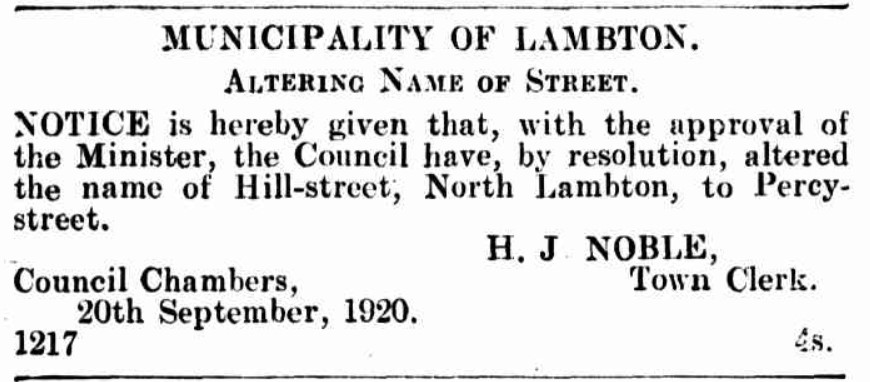
As I was searching through various land titles in the Historical Lands Records Viewer, I found Vol-Fol 1122-48 from 1894, that showed blocks of land between Hill St and William St in North Lambton. This was curious because today, Hill St in North Lambton is nowhere near William St in Jesmond?
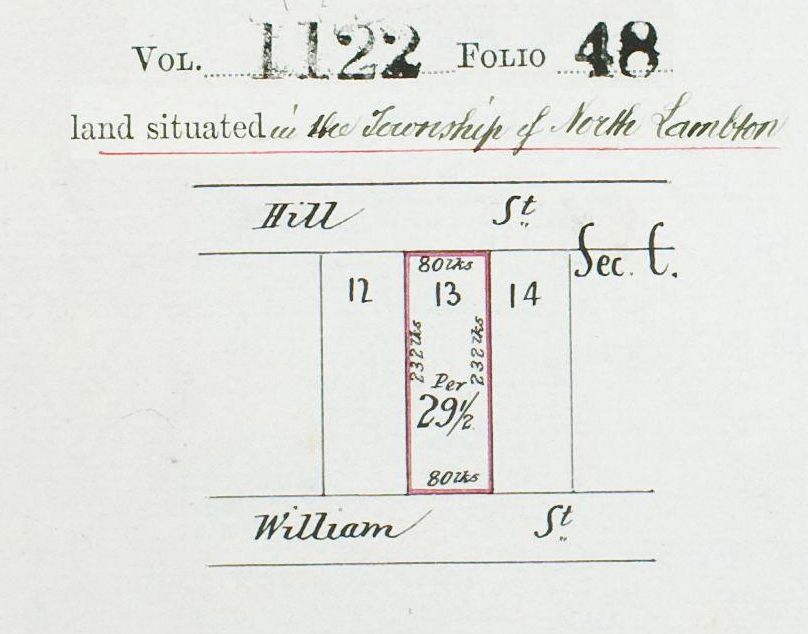
The solution to the mystery is that the Hill St in this map is actually Percy St today, and the William St in the map is the east end of Michael St today.
In 1867, Daniel Jones purchased 50 acres of land between Jesmond and Lambton which he named “North Lambton” (not to be confused with the modern suburb of North Lambton).
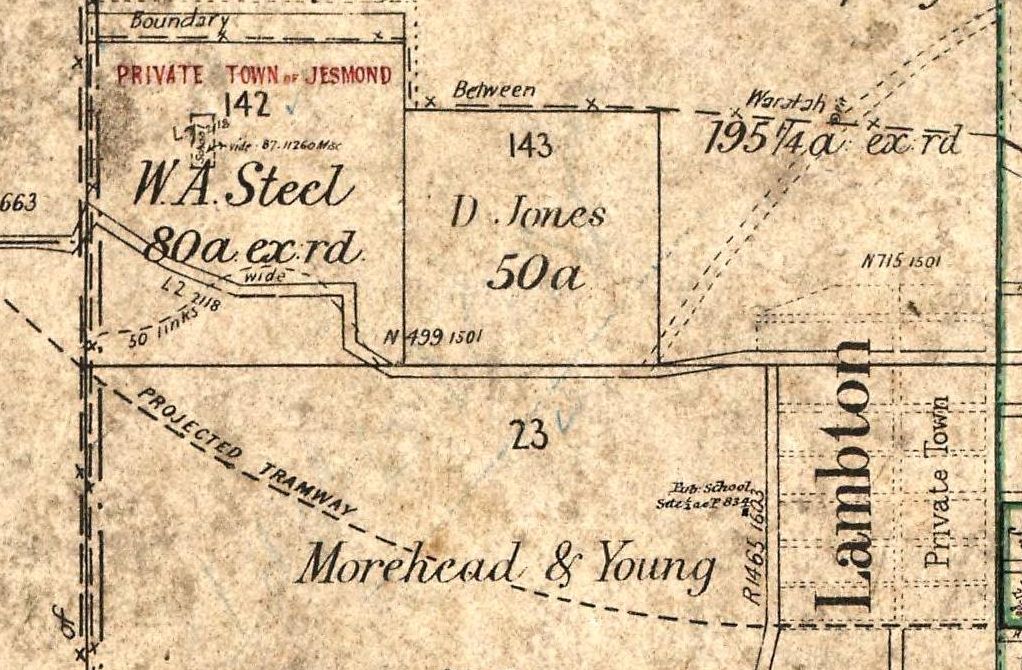
In July 1871 Jones sold a large portion (about 16 acres) of the North Lambton subdivision to Doctor John James Hill, who then began reselling individual blocks of land.
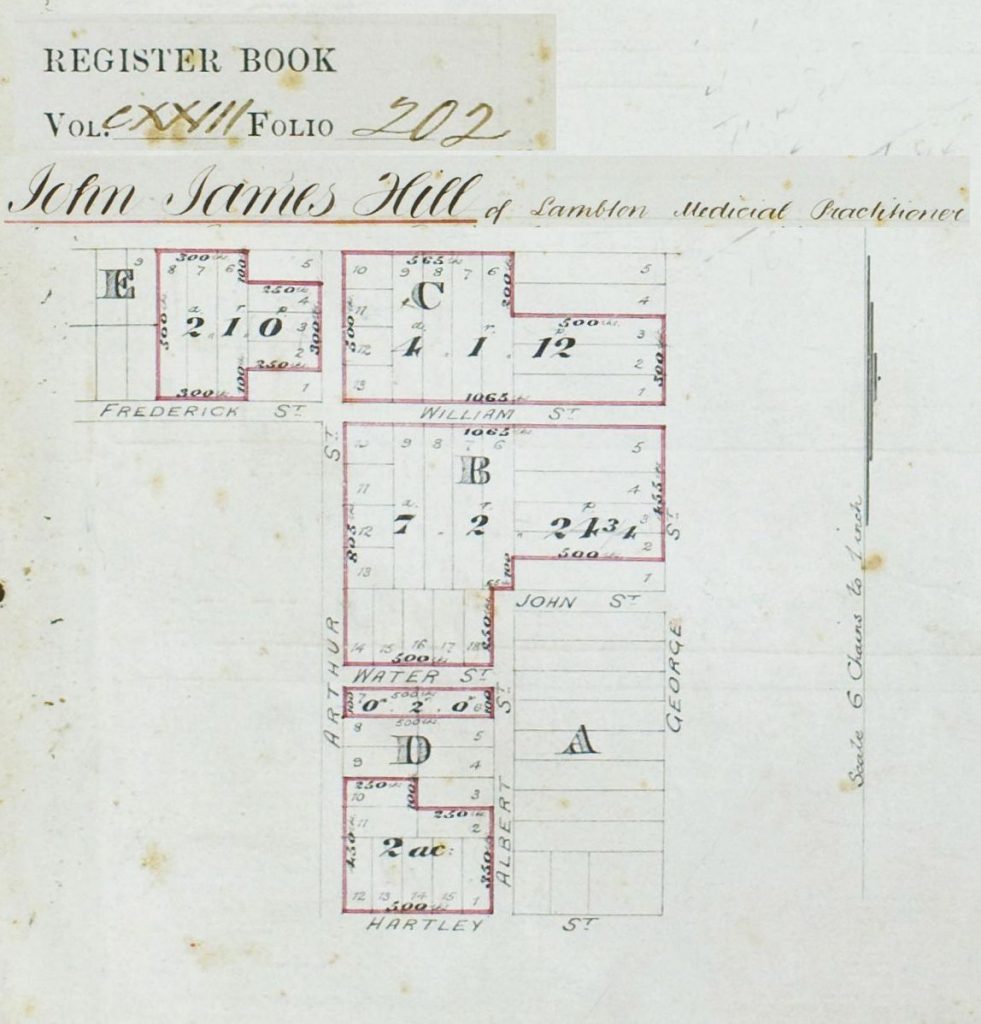
Notice that in this map that “Frederick St” is below section E, and “William St” is below section C. Today this is Michael Street, and whereas the map from Vol-Fol 123-202 shows William St joining on to George St, this part of the street does not exist today and probably never did. This is a good reminder of the care needed to interpret old maps, particularly in land titles and deposited plans. A street marked in an old map can either be an indication of a street that has been built, or a street that is planned to be built. You have to use other evidence to decide which.
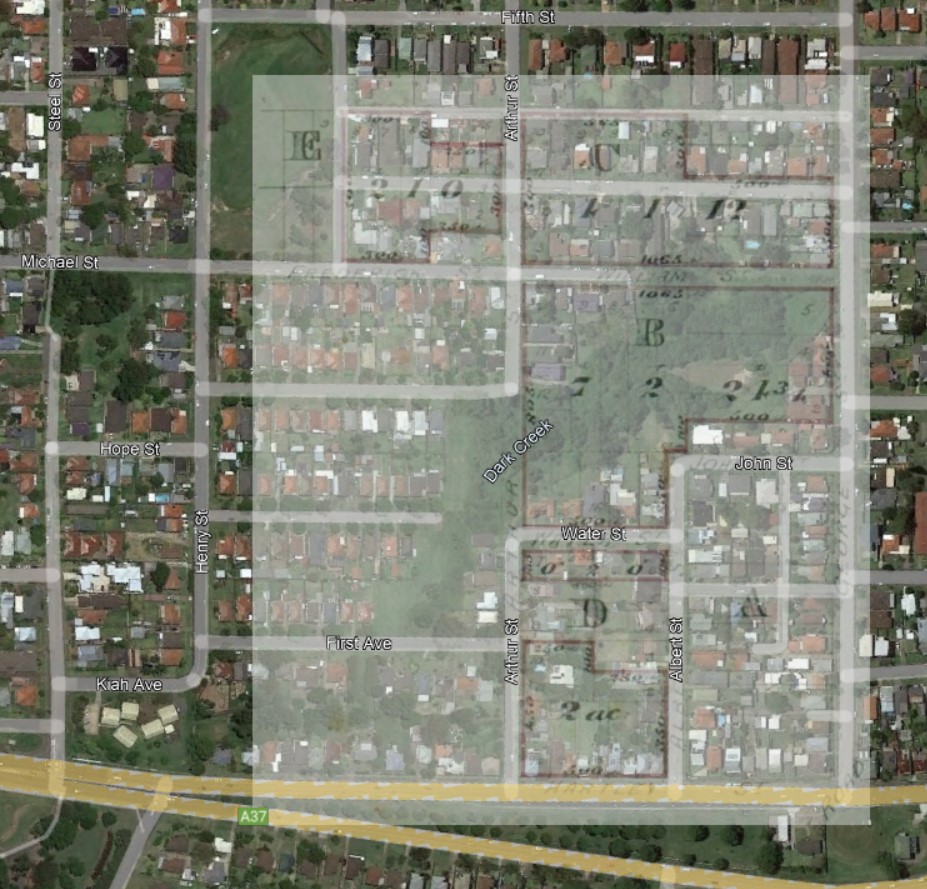
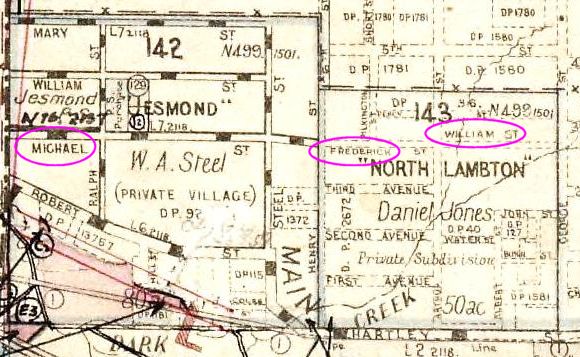
In 1873 Doctor Hill lodged Deposited Plan 96, which was a re-subdivision of the land he had bought in Sections C and E of North Lambton.
96 | Hill, J.J. | County of Northumberland | North Lambton, Lambton, Newcastle, re-subdivision of part of Sections C & E on Deposited Plan 40.

There is no map I can find of the DP96 subdivision, but presumably the purpose was to subdivide into a greater number of smaller blocks in order to maximise profit. In the new subdivision, Doctor Hill added an extra street running east-west through the middle of Section C and named it Hill St.
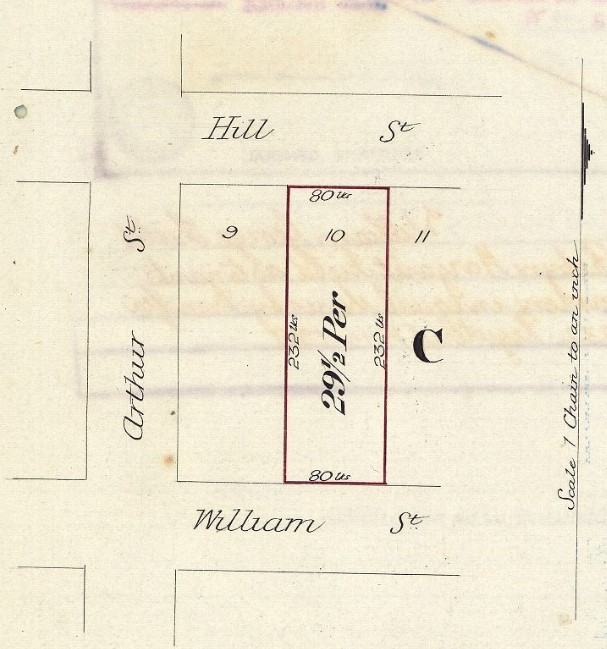
This “Hill St” was then renamed to Percy St in September 1920 to avoid confusion with the original Hill St above High St in Lambton. As if to graphically and ironically underline the need to reduce the confusion caused by having two Hill Streets, in one of the historical parish maps someone has added an annotation renaming the wrong Hill St! Oops.

But wait – there’s more …
In Hill’s subdivision of Section E in North Lambton, a narrow east-west lane was also added above Hill St. It seems that when Hill St became Percy St in 1920, that this laneway running behind the houses on the north side of Percy St came to be known as Hill St, and is marked as such on some maps.

This lane was a private road in the subdivision until Newcastle Council passed a resolution in 1991 to dedicate it as a public road, and noting that it was “also previously known as Hill Street.”

The name “Wall Lane” was in honour of the Wall family who ran the shop on the south-east corner of Arthur and Percy Streets for many years.

But wait – there’s even more …
Some 500 metres away from Percy Street, opposite Jesmond Park, there is a short stretch of road today that is also named Hill Street, and also named after Doctor Hill.

This Hill Street appears in records as early as 1878, where at the Lambton Council meeting on 26 November 1878 a letter was received …
“… from the Trustees Lambton Building Society dedicating Hill & Abel Streets Jesmond to the Council.”


These two streets were located on Lot 5 Section B of DP92 (Vol-Fol 163-244). This land was mortgaged to the Lambton and Building Investment Society in 1876. In November 1878 when the two streets were dedicated to Lambton Council, Doctor John James Hill was Chairman and Trustee of the Society, and Thomas Abel was Secretary.
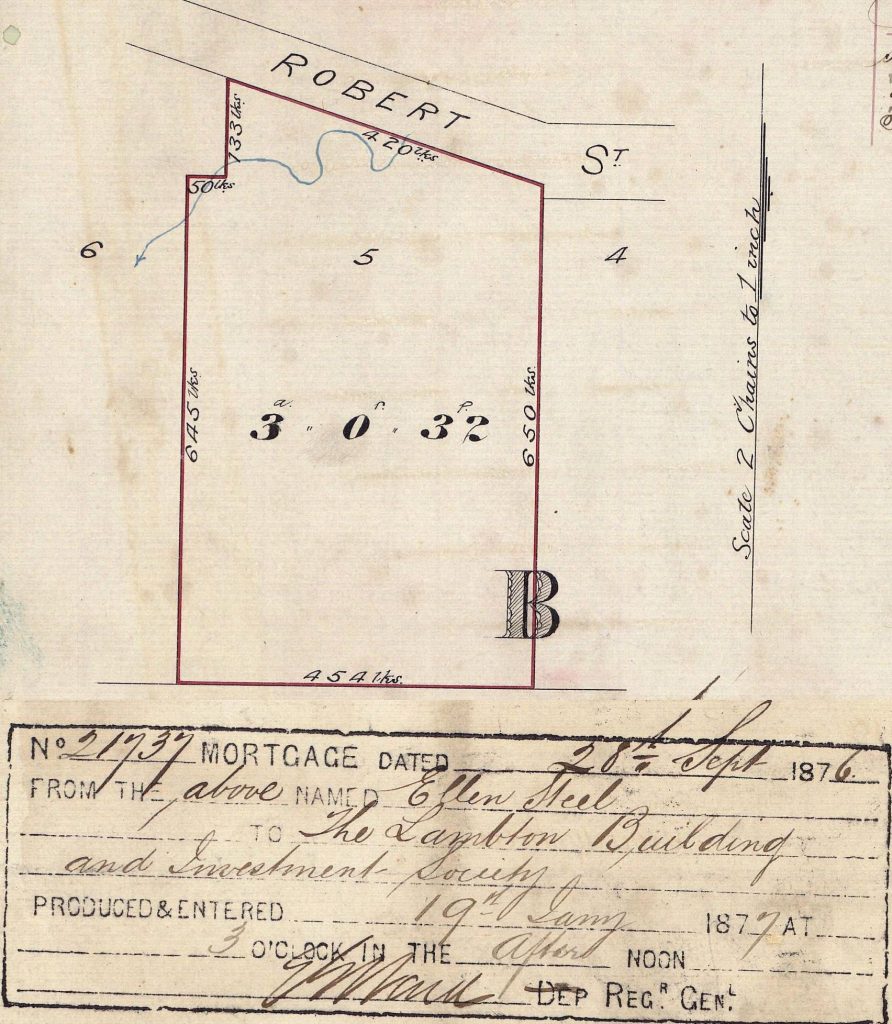
While Hill Street in Jesmond is still there in 2021, Abel Street officially ceased to exist in July 1962 when “in accordance with the provisions of the Public Roads Act, relating to Unnecessary Roads in Our State of New South Wales”, the road was closed. The eastern part of Abel Street was sold to Clarence and Annie Powell, the owners of an adjoining property, and became number 4 Hill St. (See Vol-Fol 8389-31). On the west side, the Anglican church erected a building sometime after 1974. However the transfer of ownership of that little western patch of Abel St was never officially made. This caused some confusion and a costly delay when the Anglican Church sold the property to the non-profit organisation Zara’s House in 2018.



Earlier in this article I mentioned that what is Michael St today, originally was three differently named sections – Michael, Frederick, William. But that was just in the stretch of road that lay in Lambton municipality – the section of road in the Wallsend municipality had yet another name – Robroy St.

A newspaper article from 1945 titled “Postman’s Headache at Jesmond”, notes that
The street in question, before the advent of Greater Newcastle was Frederick-street from the North Lambton area to Steel-street, Jesmond, Michael-street outwards to the old Lambton-Wallsend boundary, and Rob Roy-street thence to Blue Gum road in the Jesmond area. It is stated that, although it is now all Michael-street, officially, the three names still persist with the uninitiated, and piecemeal house numbering adds to the confusion.
Newcastle Morning Herald and Miners’ Advocate, 5 December 1945.
This morning I snapped this photo near the Jesmond Grove aged care home. The Wallsend tram line used to curve through what is now a grass lawn. What’s interesting about this location is there’s a parchmark to be found.
A parchmark is where under the right climatic circumstances, the drying out of vegetation can reveal structures under the surface when viewed in an aerial photograph. So the October 2014 image from Google Earth shows a clear curved line of the former tram line.
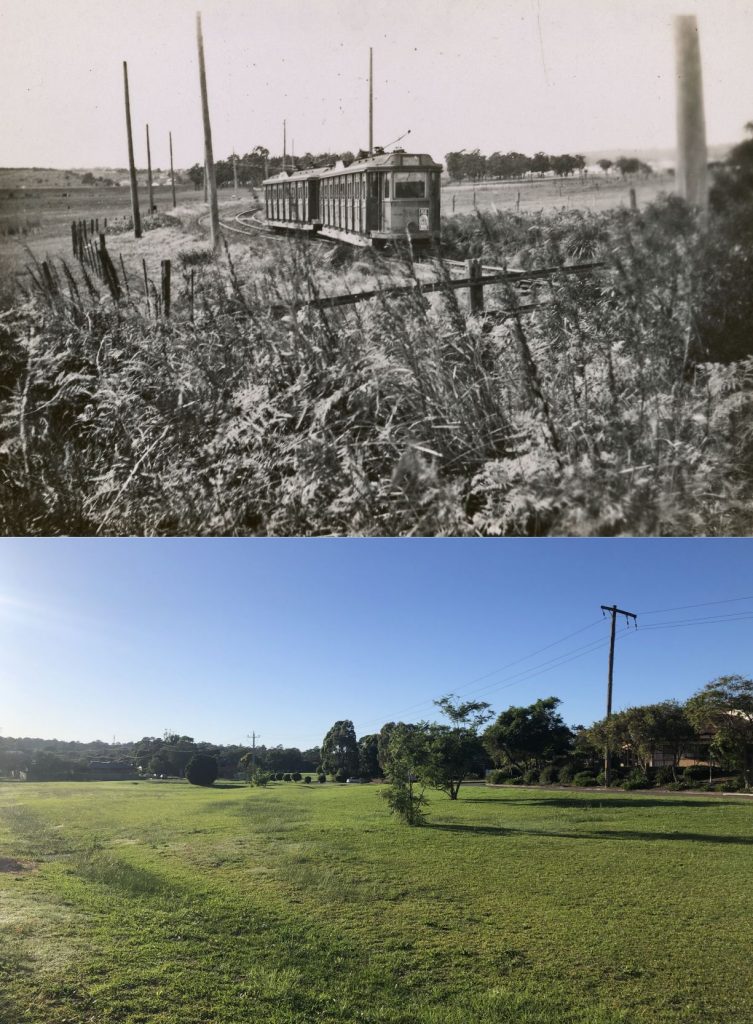
I’ve been doing pretty well at getting out for a cycle before each working day. I only missed last Thursday, when it was pouring rain. Here’s a photo I took this morning in Jesmond Park to pair up with a circa 1950 photo from the University of Newcastle Living Histories site.
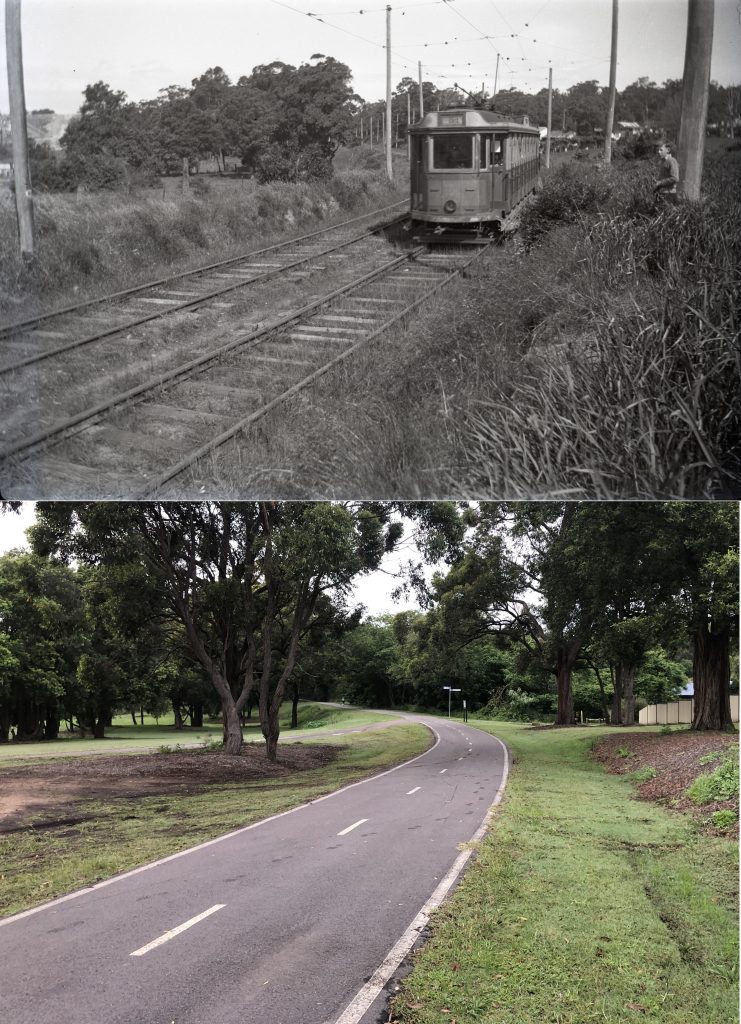
Update : Here’s the same scene in January 2025 when the bypass construction is well and truly underway.

The Scottish Australian Mining Company, owner of the Lambton colliery, was pivotal in the establishment of three of Newcastle’s finest recreation reserves – Lambton Park, Blackbutt Reserve, and Jesmond Park.
Although not officially dedicated until 1924, the Jesmond Park site had a long history of recreational use. From Lambton’s earliest days, this low-lying area at the northern extremity of the company’s mining lease, with Dark Creek running through it, was used for competitive pigeon shooting. It soon also became a popular picnic site, known as “Croudace’s Paddock” presumably because the permission of Thomas Croudace, the colliery manager, was needed to use the area.
Churches, schools, and community groups regularly held picnics there, sometimes with hundreds of attendees. The site was within easy walking distance from Lambton, North Lambton and Jesmond. It became even more accessible when the Newcastle to Wallsend tramway was constructed in 1887. Around this time, the idyllic bushland nature of the picnic site was altered somewhat with the establishment of Campion’s soap and tallow works adjacent to Dark Creek.
As early as 1908, Lambton Council and local residents began petitioning the Lands Department to have the area formally set aside as a public park. Their efforts were rewarded in 1923, when Frederick Croudace (son of Thomas) as manager of the colliery, gifted to the council the 22 acres of land that become Jesmond Park.
Even before the park was officially acquired, the Jesmond Cricket Club was asking permission to lay a wicket, and the park soon became a popular venue for other sports such as football and soccer. A tennis court was constructed in the north-east corner of the park in 1925, and a new Jesmond Park tram stop, in line with Steel St, was opened in 1926.
In 1938, control of Jesmond Park passed from Lambton Council to the newly formed Greater Newcastle Council, who maintain the park to this day.

The article above was first published in the September 2017 edition of the Lambton & New Lambton Local.

According to the Jesmond Public School 1887-1987 Centenary booklet, John Campion arrived in Australia from England c1880. Around 1887 Campion began refining tallow for miner’s lamps, in partnership with his brother-in-law Ben Cunnington. The photo below shows Campion & Cunnington’s Soap and Tallow Works in 1892.
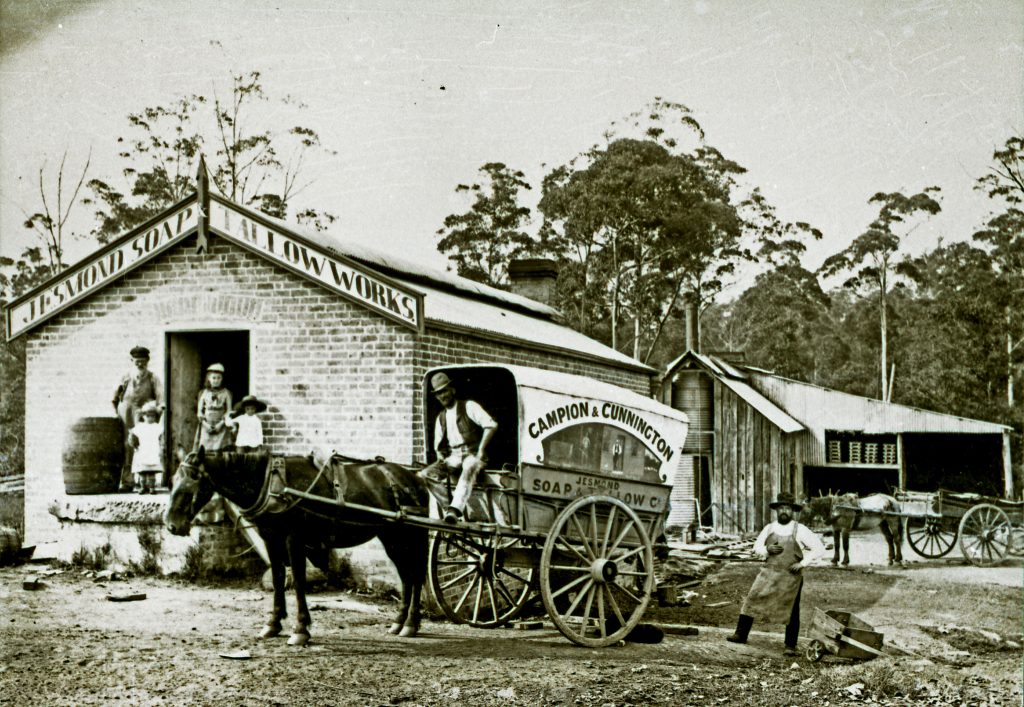
The nature of soap manufacture meant that the works were susceptible to fire, and a number of incidents of destructive fires were recorded over the years.
A 1944 aerial photograph shows the soap works building sitting astride the remnants of Dark Creek, just to the north of the concrete storm water drain. Just to the east of the building is the dam that appears in the 1934 newspaper photograph.
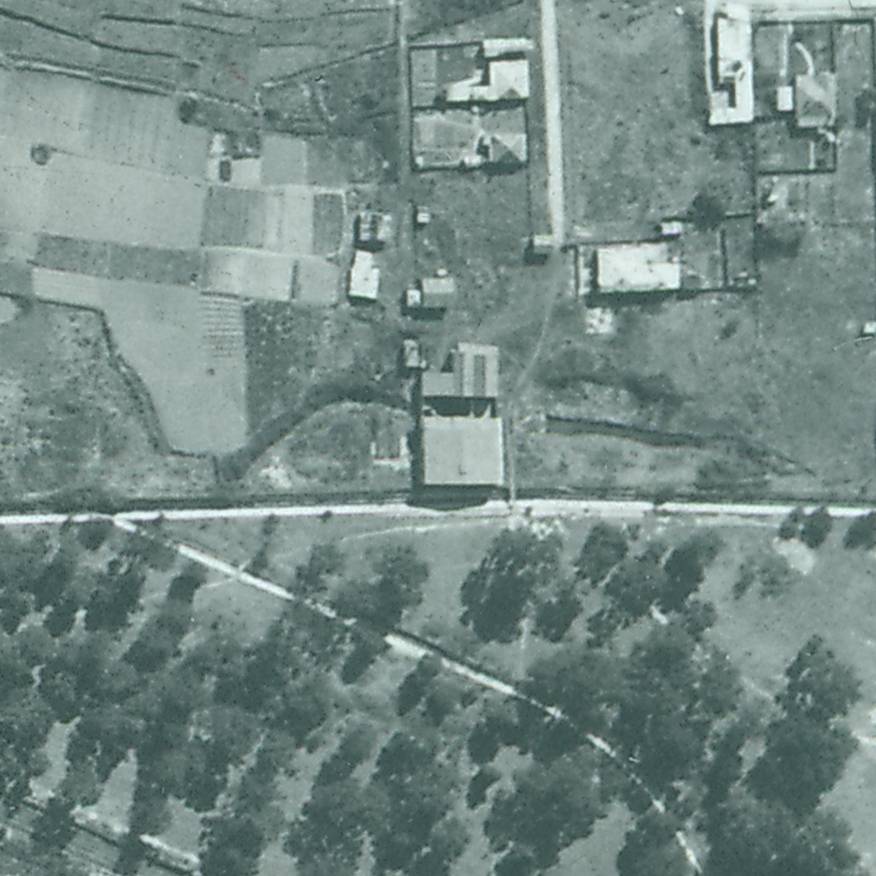
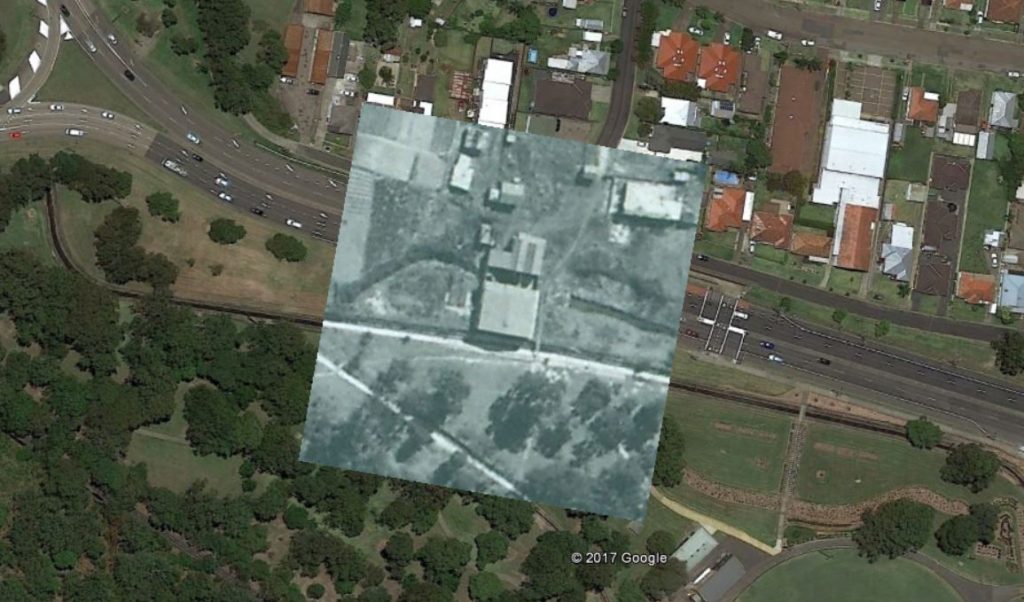
| Article Date Event Date | Notes |
|---|---|
| 13 Jun 1871 10 Jun 1871 | First mention of "Croudace's Paddock" in the newspaper. Inquest into the accidental shooting death of a young lad, Charles Blim, after a pigeon shooting match. |
| 23 Sep 1871 | "A grand pigeon shooting match is to come off between two old knights of the trigger, in Mr. Croudace's paddock, at Dark Creek, on Saturday (three weeks) between Blacket Richardson and John Ferguson, for £10 aside." |
| 11 Nov 1871 | Picnic in "Croudace's Paddock" of the Lambton Band of Hope, with 300 attendees. |
| 20 Sep 1873 | Remarks on the naming of Dark Creek … "Jesmond is the correct, and more suitable name of this locality. It derives its title of Dark Creek from the men and days of thirty years ago, when the place was remarkable for its thickly, woody, and consequently shaded appearance." |
| 6 Jun 1879 | Incident of cruelty by youths towards a "native bear" (koala) at "Croudace's Paddock. |
| 19 Oct 1895 | Advertisement for the Lambton Primitive Methodist Sunday School picnic in Croudace's Paddock, advising that "the Traffic Manager having been written to, the trams will probably stop at the paddock." |
| 26 Oct 1897 23 Oct 1897 | "The members of the Wallsend and Lambton Government ambulance classes assembled in Croudace's Paddock, Lambton, on Saturday, and were examined in squads by Drs. Nash and Stapleton as to their knowledge of the principles of rendering first aid to the injured." |
| 5 May 1900 | "The Newcastle, Lambton, and Wallsend companies of the 4th Infantry Regiment went into camp at Croudace's Paddock, Jesmond, last night, while it was raining heavily. It is intended to "take" Charlestown this morning." |
| 3 Aug 1900 1 Aug 1900 | A fire at Mr. J. Campion's tallow refinery. |
| 23 Oct 1902 22 Oct 1902 | "Croudace paddock is fast getting into favour as a holiday resort. There were no less than five parties of picnicers on the ground and the immediate vicinity yesterday." |
| 1 Feb 1905 | Residents petitioning for a tram stopping-place in Croudace's Paddock. |
| 23 Apr 1908 21 Apr 1908 | The Minister for Lands rejects Lambton Council's application to have Croudace's Paddock dedicated as a public park. |
| 5 May 1909 4 May 1909 | Jesmond Progress Committee asks Lambton Council "to approach the general manager of the S.A.M. Company, with a view of getting a grant of the land known as Croudace's paddock as a public park for Jesmond." |
| 15 Jul 1910 14 Jul 1910 | Fire in Campion's Soap Works, Jesmond. |
| 23 May 1917 | The tramways department asks Lambton Council to suggest a name for the stopping place near Croudace's paddock. The Council recommends the name "Charlton", however there is no evidence that this name was ever adopted. |
| 23 May 1917 | "The Council decided to suggest that the stopping place be named Carlton Place, and recommended that the stopping be shifted a few chains easterly." |
| 1 Aug 1919 | Lambton Council asks the Lands Department to resume Croudace's paddock, Jesmond, for a recreation reserve. Alderman Bell said that "for many years the area, by permission of the S.A.M. Company, had been largely availed of for picnic purposes, and as a ground for cricket and football. The situation was on ideal one, and with very little expense it could be converted into one of the best parks in the district." |
| 5 Oct 1920 | Alderman Hardy, Mayor of Lambton, raises with the Minister of Lands the question of resuming an area of land at Jesmond, known as Croudace's paddock, for a park. "The Minister assured the Mayor that this matter had not been overlooked. The papers had been referred to the district surveyor." |
| 23 Mar 1921 22 Mar 1921 | Frederick Croudace, meets with the district surveyor and a representative of the council to inspect the land known as Croudace's Paddock, for the proposed park at Jesmond. |
| 25 Jul 1923 | "The matter of the acquisition of an area approximating 22 acres of land at Jesmond had been brought to a successful conclusion by an interview with Mr. Robinson, general manager of the Scottish Australian Mining Company, who agreed to grant the land to the council for park purposes, the only obligation on the part of the council will be the survey transfer and fencing costs. The thanks of the council were due to Mr. Robinson and Mr. Croudace for the fairness and courtesy shown during the negotiations and to the company for its generous gift." |
| 22 Aug 1923 21 Aug 1923 | "A. Barrie, on behalf of Jesmond Cricket Club, asked Lambton council last night for permission to lay a wicket on Jesmond park. The Mayor said that the application was premature, as the council did not yet have control of the park. It was resolved to refer the matter to the Scottish Australian Mining Com pany." |
| 20 Feb 1924 19 Feb 1924 | "The S.A.M. Company had dedicated to the municipality Croudace's paddock as a public park. Efforts were made to obtain a grant from the Government to improve the area, but so far without any good result." |
| 30 Apr 1924 29 Apr 1924 | Various mentions of Jesmond Park at Lambton Council meeting, including that a site for a tennis court had been decided on. |
| 14 Sep 1925 12 Sep 1925 | Opening of tennis court in north east corner of Jesmond Park. |
| 17 Feb 1926 16 Feb 1926 | Lambton Council to ask the tramways department to have the "tram stopping place at Jesmond Park extended in a line with Steel-street." |
| 9 Jun 1926 8 Jun 1926 | "A petition was received from the residents of Jesmond, bearing 42 signatures, asking that the Jesmond loop be retained as a tram stopping place in addition to the new stop at Steel-street." |
| 23 Sep 1929 | "Some time ago the Jesmond Progress Association approached the council with a view of having a water service connected to the Jesmond Park. They offered to carry out the work providing the council would bear the cost of the material … Voluntary labour was forthcoming to dig and cover in the trenches, the whole of the work being completed during the week. The [water] board granted a free supply of water on the condition that it would be used for drinking purposes only." |
| 22 May 1934 | Photograph of Jesmond Park, 1934. |
| 25 Nov 1938 | "Within a four-penny-tram ride of the city is Jesmond Park - a natural playground which has been saved for posterity by a council now extinct. Practically unknown by many people, the park provides ample facilities for sporting activities amid the quiet surroundings of the silent bush." |
| 17 Mar 1948 | A motion is defeated in Newcastle Council that would have seen Jesmond Park renamed to Johnson Park, in honour of Alderman J.T. Johnson, who served on Lambton Council for many years. |
Ever since I obtained a 1944 aerial photograph of the Lambton region from Newcastle Library, I was intrigued by this loop of track to the south of Newcastle Road.
My guess was that it was used as a training track for horses.
While researching another unrelated matter in Trove today, I found a 25 June 1921 newspaper article on the Jubilee of Lambton that solves the mystery. The article, in reminiscing on times past, reports that
“Many horse racing events were held at the road known as the Jesmond Hill, from the Dark Creek bridge to the present site of the reservoir.”